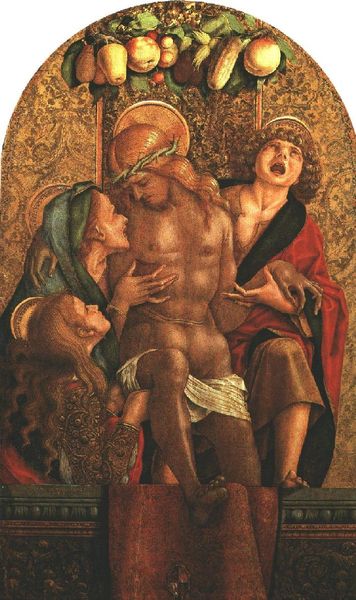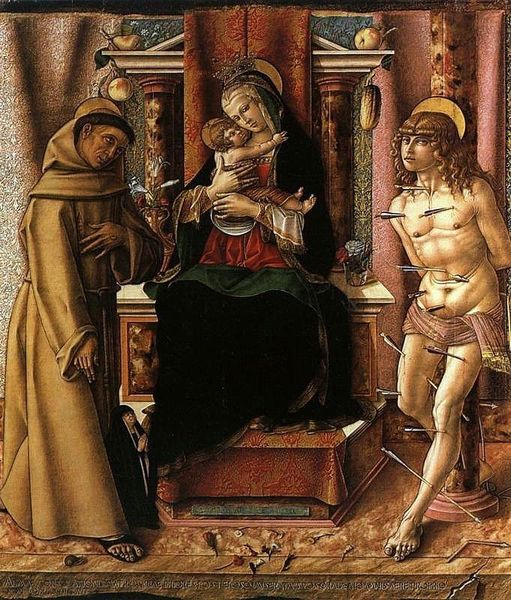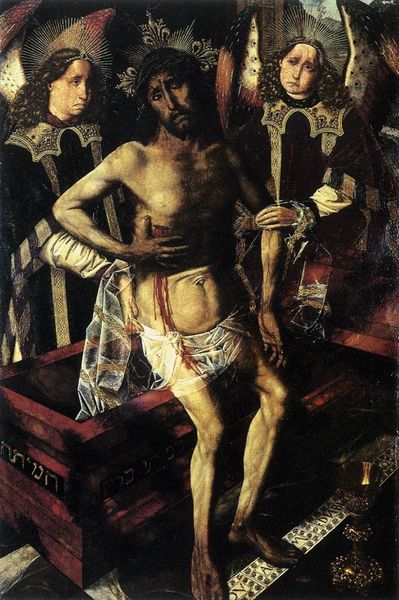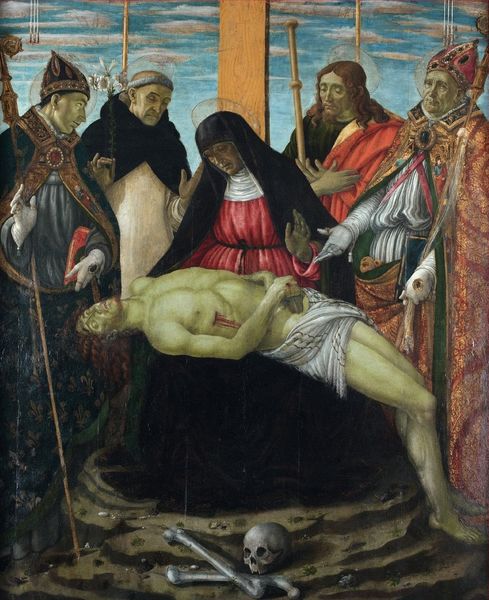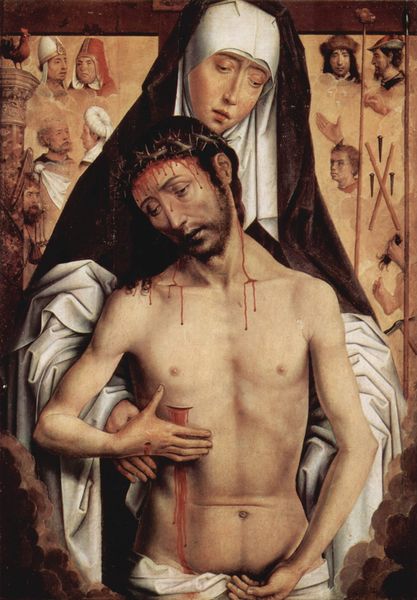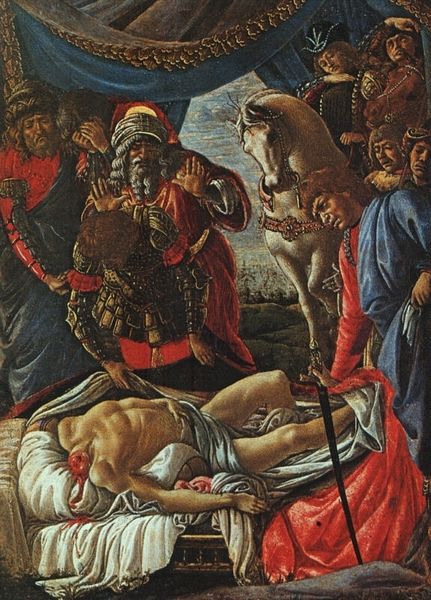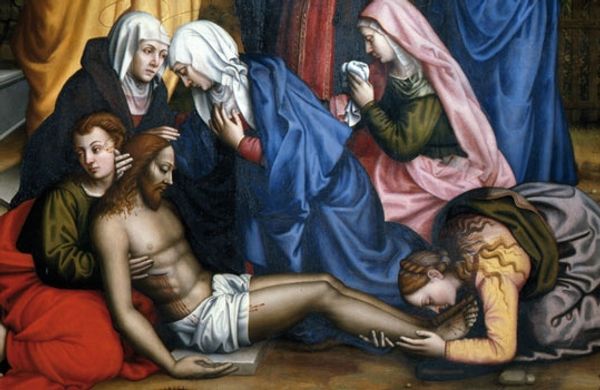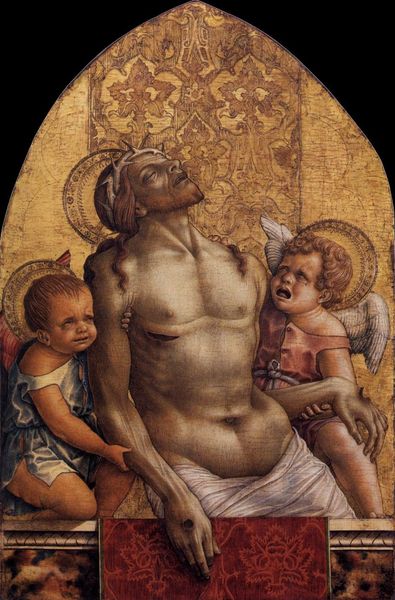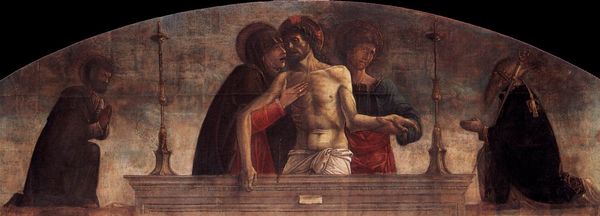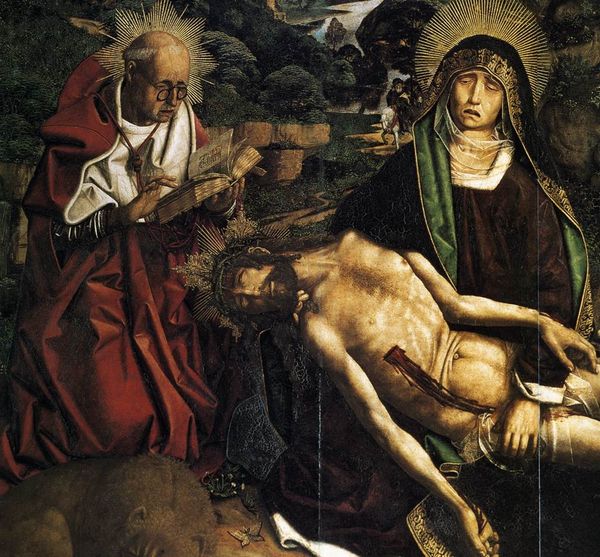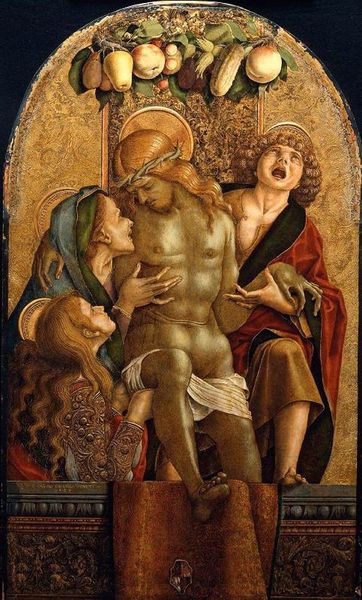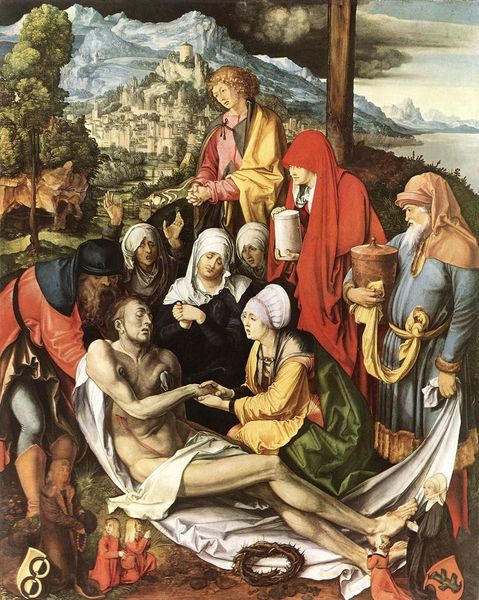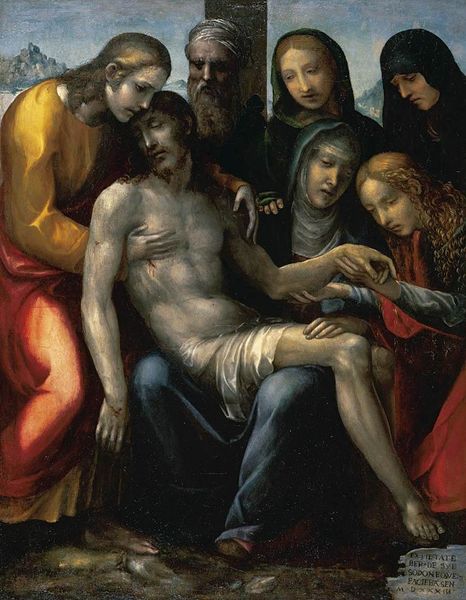
Dimensions: 34.3 x 24.5 cm
Copyright: Public domain
Editor: Robert Campin's "Mourning Trinity (Throne of God)," created around 1435 using oil paint, is incredibly striking. The muted colors and the weight of Christ’s body create a strong sense of sorrow and suffering. How do you interpret this work? Curator: It's crucial to consider the painting within its socio-political context. The suffering body of Christ wasn't just a religious symbol, but a reflection of the very real suffering experienced by the masses during a period marked by plague, war, and social unrest. Think about the power structures at play – the Church, the monarchy – and how images like this both reinforced and potentially challenged those powers. What is the significance of the Trinity displayed together? Editor: Well, seeing God the Father holding Jesus feels like a very human display of grief. Is it meant to create more empathy for a divine figure? Curator: Exactly! And how does that humanization intersect with notions of masculinity and power? God is usually seen as a strong figure. Here he holds Christ's body, suggesting vulnerability. It makes you question conventional representations of authority, doesn’t it? But also, note the white dove, and how that can relate to gender theory in its portrayal as the only matriarch of the divine being and relationship within the scene. What does the throne evoke? Editor: That’s really fascinating. I guess I never thought about it in terms of challenging those power structures but from this context, I see the dove of the Holy Spirit resting near Christ evokes questions around matriarchal religious depictions. Curator: And the location where it’s been housed, Hermitage Museum of Saint Petersburg is important as well to question! Think about the power of place and what role this work played to the society that came to visit the palace over time. Considering that aspect further complicates the painting’s original intention, wouldn’t you say? Editor: Definitely! I hadn't fully appreciated the complex interplay between religious symbolism, social commentary, and gendered interpretation. Thanks for providing a view to consider new lenses. Curator: And thank you for posing the initial question. Art gains from new perspectives!
Comments
No comments
Be the first to comment and join the conversation on the ultimate creative platform.
